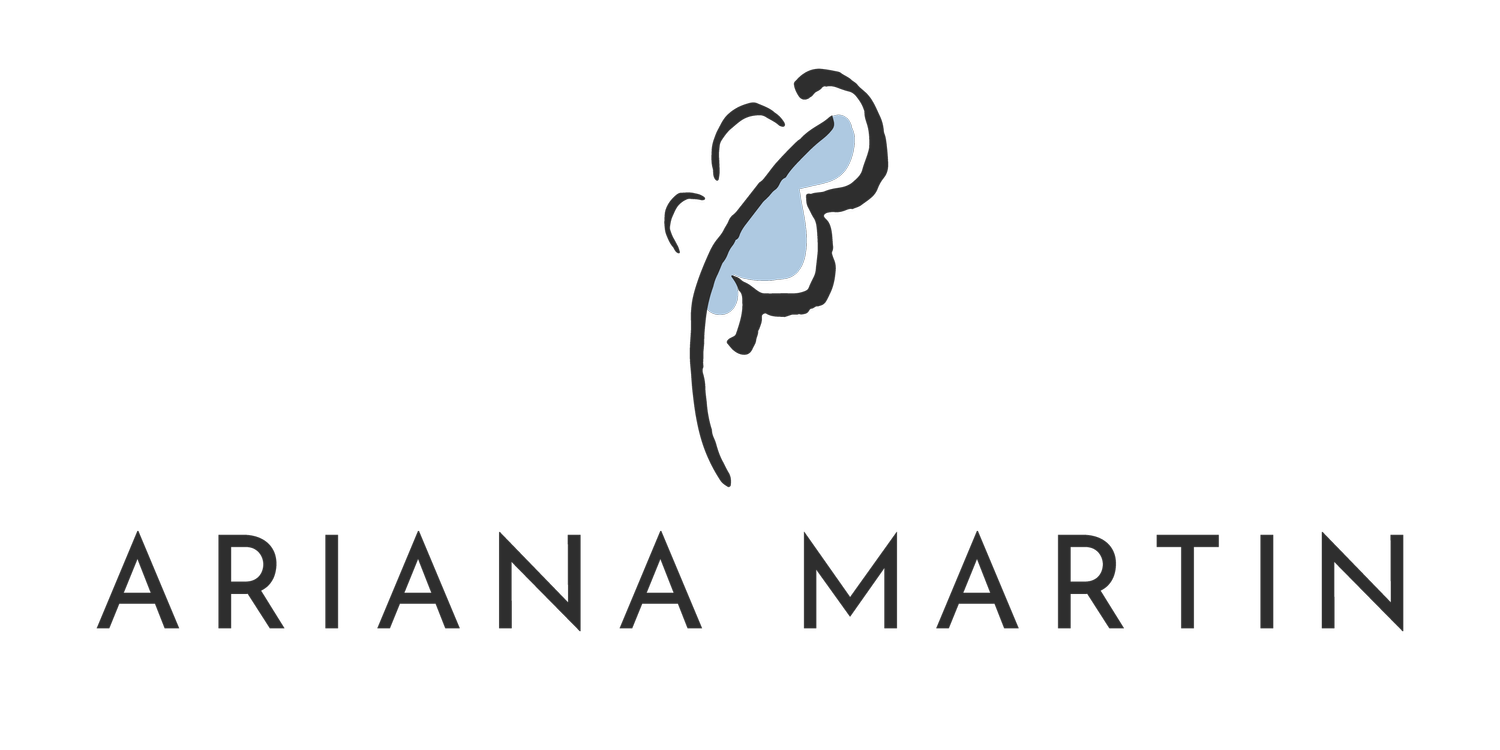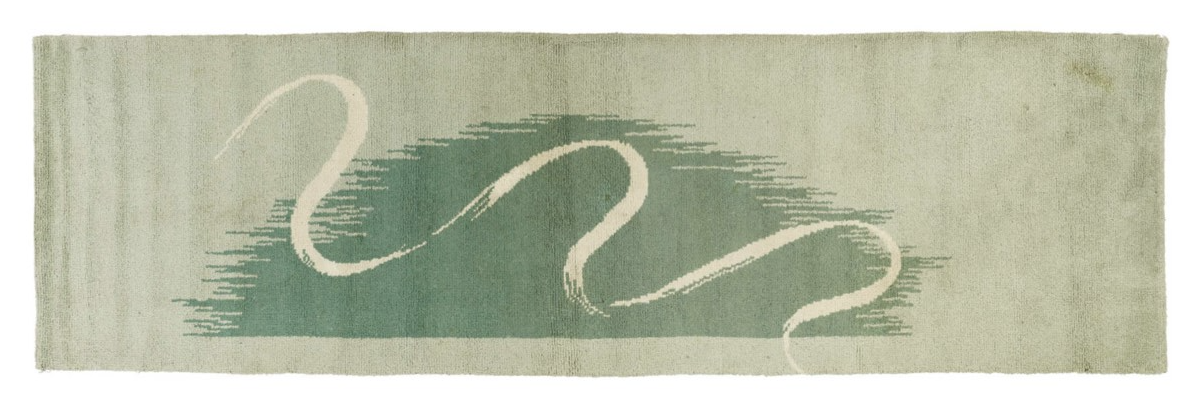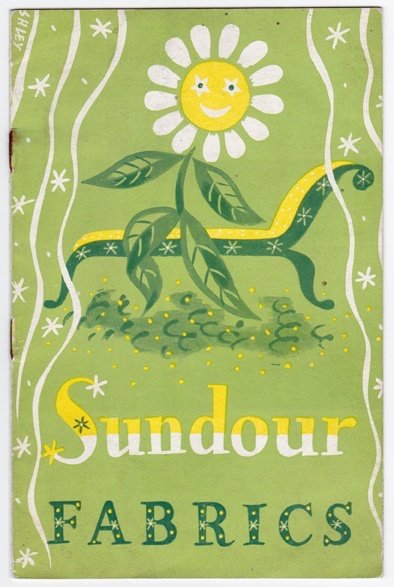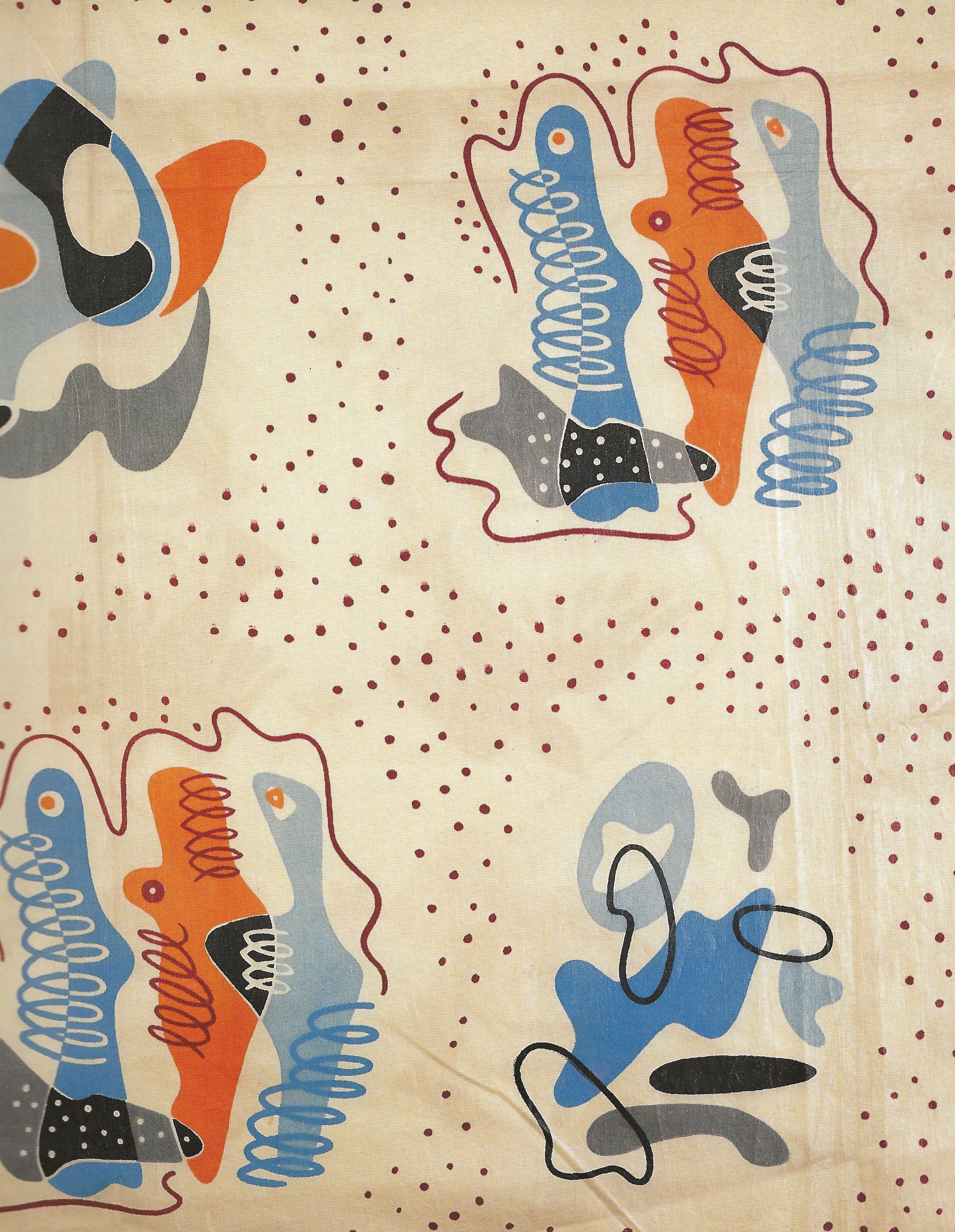ASHLEY HAVINDEN
Ashley Havinden at work. Image source Design Council Archive, University of Brighton Design Archives.
Ashley Havinden (1903-1973) - known professionally as simply ‘Ashley’ - was one of the most brilliant designers of the 20th century. Chiefly a commercial artist concerned with producing persuasive advertising material, he also applied his talents to typography, painting, interior and textile design. His peppy, lyrical design style is instantly recognisable, particularly when coupled with his trademark brush lettering.
By all accounts Ashley was a dapper dresser, a perfectionist and - according to his son Michael - ‘cheerful, optimistic’ and ‘extremely entertaining to be with’. He cut his professional teeth in advertising, or commercial art as it was then known. William Crawford, who ran the hotshot London ad agency W.S. Crawford (think Mad Men but 30 years earlier), took a chance on the young and untrained Ashley, hiring him as a trainee layout artist aged 18. The gamble paid off; Ashley remained at the firm his entire working life, overseeing campaigns for Martini, Liberty’s and Chrysler. Crawford appointed him Art Director in 1929 and ultimately Vice-Chairman in 1960. It was here that Ashley met his wife Margaret, who (progressively for the time) was also made a Director of the firm.
But far from just an ad-man; Ashley’s lifelong endeavour was to advance the quality of design across the disciplines - a mission shared by many of his creative peers in the Modern Movement.
Left: Eno's Fruit Salt ad campaign, 1927. Image Source V&A collections.
Right: Campaign for the Milk Marketing Board, 1936.
With William Crawford (Bill to his colleagues) as his mentor, Ashley designed many eye-catching ad campaigns during the 1920s. Both men were interested in new graphic styles emerging in Germany. Ashley’s striking advert for Eno’s Fruit Salt (above) employs the flat colour, chunky typeface and diagonal arrangement favoured by pioneering German designers of the time. The advert didn’t go unnoticed in the design world; it was selected for the V&A’s Posters exhibition in 1931.
Ashley's use of more sprightly brush lettering became something of a calling card from the mid-1930s onwards. In 1955 the typeface was certified by the Monotype Corporation as Ashley Script - perhaps why the font looks so distinctly mid-century today.
Design for rug, Gnocchi 1937, gouache on paper.
Image source Advertising and the Artist, Hollis et al, 2003.
By the 1930s, Ashley’s address book was starting to look like a roll call of Modernist luminaries. His growing interest in Modernism saw him rub shoulders with Henry Moore, Paul Nash, Barbara Hepworth, Wells Coates and Bauhaus behemoths Walter Gropius and László Moholy-Nagy.
A fruitful friendship for the Havindens was with the Duncan Millers, whom they met in 1933. John and Madeline Duncan Miller ran an interior decoration firm committed to the Modernist ideals of synthesising art and architecture, with a particular interest in furnishing fabrics. They prompted Ashley to try his hand at designing rugs in 1934, with Duncan Miller Ltd taking care of production. He later said, ‘I jumped at the idea of the application of bold brush forms and vivid colours to produce “swooping” designs for modern rugs’. And swooping they were. Interestingly, at the time he designed these rugs, Ashley was having drawing lessons with sculptor Henry Moore. The amorphous shapes (as in Gnocchi) certainly bring Moore’s famous figures to mind.
Top: Section of Fontainebleu rug, 1936.
Bottom: Exhibition of Ashley's textiles and rugs held at Duncan Miller Ltd, London, 1937.
Ashley went on to design fabrics for Campbell Fabrics and Old Bleach Linen Co, but perhaps the most plentiful partnership was with Alastair Morton of Edinburgh Weavers. Morton was the third generation to join the family textile firm Morton Sundour. On a mission to modernise, he established Edinburgh Weavers in 1931 - a progressive offshoot producing artist-designed textiles for the cosmopolitan consumer. Morton met Ashley after hiring W.S. Crawford to design publicity material for MS in 1935. Charmed by the cheery sunflower motif that Ashley devised, Morton immediately asked him to design fabric for Edinburgh Weavers. This may have been the first time Ashley was challenged to put his designs into repeat, but with Morton as his guide, the results didn’t disappoint.
His first design for Edinburgh Weavers, Milky Way, has a lyrical quality quite unlike the angular forms often found in Art Deco textiles. I was excited to stumble across this photo (below) of the fabric upholstered on a chair and sofa from 1938 - the large scale of the print really brings the room to life.
Left: Ararat printed linen, designed for Campbell Fabrics, 1937. Image source V&A collections.
Right: publicity brochure for Morton Sundour Fabrics, 1935. Image source V&A collections.
Top: Milky Way woven fabric, designed for Edinburgh Weavers, 1935.
Milky Way fabric in situ, from Interior Decoration Today by H.G. Hayes Marshall, 1938.
In her brilliant book Alastair Morton and Edinburgh Weavers, Lesley Jackson suggests that is was Havinden who introduced Morton to the 'nest of gentle artists' living in his neck of the woods, Hampstead. This meeting of minds led Morton to launch a range of artist-designed textiles named ’Constructivist Fabrics’. Alongside Barbara Hepworth, Winifred and Ben Nicholson, Arthur Jackson and Eileen Holding, Ashley contributed two designs - Segment and Ashley’s Abstract (pictured below). The latter a punchy pattern of blue, grey and rust biomorphic shapes, again reminiscent of Moore and Hepworth’s sculptures. At this point Ashley was an aspiring abstract painter himself and it’s easy to see how he borrowed motifs from his painting for his textile designs.
After the war, Ashley cemented his status as an eminent British designer by creating the poster and catalogue for Britain Can Make It - a government-funded exhibition held in 1946 to promote British trade and manufacturing amidst austerity gloom.
There is so much more to say about Ashley Havinden’s contribution to design, but for the sake of brevity I will leave it here (and perhaps indulge in a ‘part two’ in future). I get the impression that he was not a competitive designer; rather he relished the opportunity to applaud and promote artists he admired. As John Gloag wrote of him - “he was a great impresario of talent and took infinite trouble to find or make opportunities for designers of promise”. His legacy exists in an archive held at the National Galleries of Scotland.
Ashley's Abstract, screen-printed glazed cotton for Edinburgh Weavers, 1937.
Image source Advertising and the Artist, Hollis et al, 2003.
FURTHER READING:
Advertising and the Artist: Ashley Havinden, Richard Hollis, Ann Simpson & Alice Strang, 2003.
Ashley's Textiles, Richard Calvocoressi, The Journal of the Decorative Arts Society 1890-1940, No. 3 (1979).
Alastair Morton and Edinburgh Weavers: Visionary Textiles and Modern Art, Lesley Jackson, 2021.
Moving the Hearts and Minds of Men: Bill Crawford, Ad Man, Ruth Artmonsky, 2014.
“Ashley Havinden”, University of Brighton Design Archives blog, https://blogs.brighton.ac.uk/royaldesigners/2016/06/06/ashley-havinden/
“Ashley Havinden and the 'Britain Can Make It' poster”, V&A Museum website, https://www.vam.ac.uk/articles/ashley-havinden-and-the-britain-can-make-it-poster
20th Century Pattern Design, Lesley Jackson, 2002.












